Suez Canal - Great dream of kings
The work changed the history of humanity's trade - it has been cherished by many Egyptian Pharaohs and the Emperor Napoleon Bonaparte.
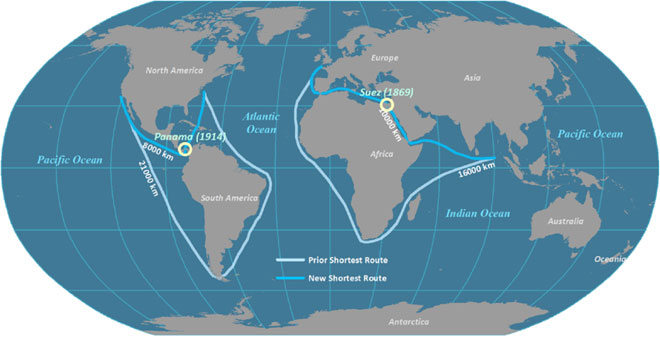
On December 17, 1869, the Suez Canal connected the Mediterranean to that Sea officially opened after 15 years of construction, undergoing many delays due to political disagreement, lack of labor and deadly cholera.When in operation, this 164km long waterway has permanently changed the history of international sea transport, allowing boats not to cross the southern tip of Africa, shortening 6,000km.This is the shortcut connecting the Eastern and Western worlds.(Photo: Hofstra).
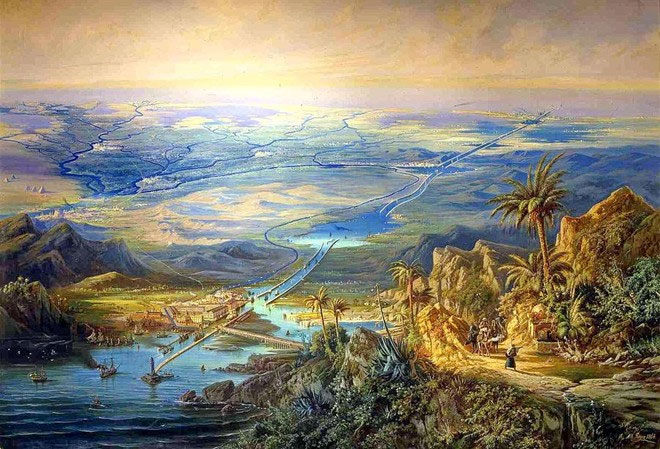
The modern Suez Canal is just one of numerous artificial waterways across Egypt.Historians believe that Pharaoh Senusret III may have built a canal connecting the Red Sea with the Nile around 1850 BC.According to ancient documents, Pharaoh Necho II and Darius the Great also started and abandoned similar projects.(Photo: History Channel).
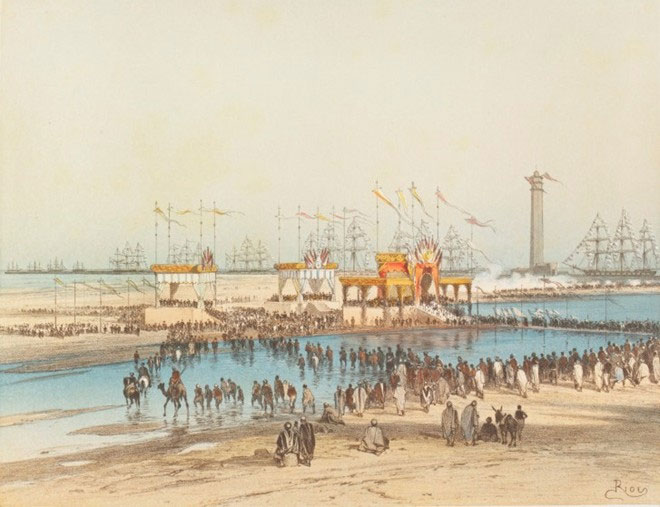
Under the plan, the canal will be completed in the 3rd century BC, under Ptolemy's reign. Instead of a direct link like the Suez Canal today, the "Pharaoh's canal" will cross the desert, connecting the Nile to the Mediterranean.(Photo: Collections).
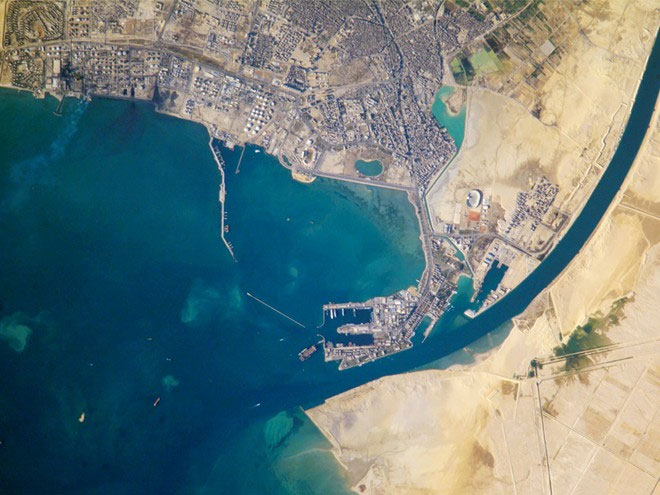
After conquering Egypt in 1798, Napoleon Bonaparte sent a feasibility study team to cross the Isthmus of Suez and build a canal connecting the Red Sea to the Mediterranean.However, after four separate surveys, his men mistakenly concluded that the Red Sea was at least 9 meters higher than the Mediterranean.They warned Napoleon that if the canal was built, the flood would flood the Nile Delta.(Photo: Earthobservatory).
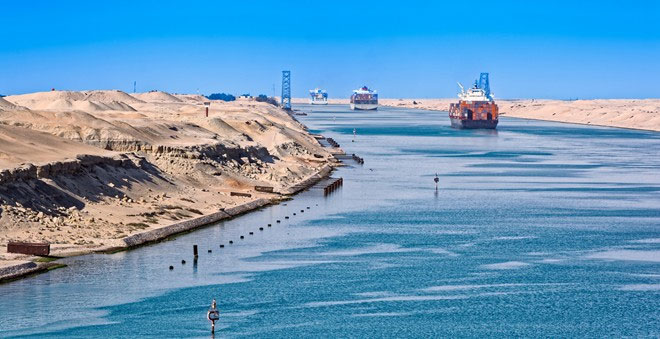
This miscalculation is enough to make Napoleon abandon the project.The construction of the canal stopped until 1847, when a team of researchers confirmed that there was no big difference in altitude between the Mediterranean and the Red Sea.(Photo: Themideastbeast).

The plan to build the Suez Canal officially began in 1854, when the French diplomat Ferdinand de Lesseps agreed with the Egyptian Governor Said Pasha to set up the Suez Canal company.The construction of this huge canal requires a lot of energy and money.Starting in 1861, tens of thousands of workers (the poor were forced to work by the government) used rudimentary tools such as hoes and shovels to dig the head of the canal by hand.Progress is extremely slow.(Photo: Cacheirofrias).

The project had to be stopped after Governor Ismail Pasha suddenly banned forced labor in 1863. Lesseps and the company changed the way and began using hundreds of steam-powered excavators and excavators. water to dig a canal.This new technology helps them quickly catch up on progress in the last 2 years.75 million cubic meters of soil has been dug and moved during the construction of the main canal, three-quarters of which are due to machinery.(Photo: Alternatehistory).

When the canal was about to be completed after 10 years of hardship, French sculptor Frédéric-Auguste Bartholdi tried to convince Ferdinand de Lesseps and the Egyptian government to build a statue called "Egypt brings light to Asia" set at the door to the Mediterranean.It will be a 27m tall female statue, dressed in Egyptian clothes and holding a giant torch.However, he was rejected.(Photo: Wakingupwisconsin).

During the Six-Day War of 1967 between Egypt and Israel, the Suez Canal was closed, blocking both ends with mines and sunken ships.At that time, 15 international cargo ships were stuck in the channel at Great Bitter Lake.The ships must stay there for 8 years.They set up a floating community, organized sports matches and entertainment events.They even have their own stamps and internal trading system.Finally, the ships left the channel in 1975, but only two ships were able to carry out the voyage.(Photo: 7seasvessels).

The Suez Canal is considered the shortest route connecting the east and west thanks to its special geographical location.It is also considered the first artificial canal to be used for transportation and trade.Currently, it is estimated that there are about 50 ships passing through the canal every day, giving Egypt 5 billion USD per year.(Photo: Wellentheorie / Wordpress).

However, the canal is only 7.6m deep, 22m wide at the bottom and about 60-90m above the surface, difficult to meet the needs of modern large cargo ships.In 2014, Egypt's Suez Canal Administration announced a project to repair and deepen the $ 8.5 billion main channel, doubling the profitability of the channel by 2023. (Photo: Huffingtonpost) .
- See Egypt's new Suez Canal on its inauguration
- Summary of the best news from August 1, 2017
- Explore the most magnificent canal in the ancient world
- Incredible set of Panama Canal construction
- Underground treasure in Valley of Kings
- 'Dizziness' with the number of children of kings
- Dream of death
- Invented the program 'read', seize the dream
- Ships set records when passing through narrow canals
- The reasons people dream when they go to sleep
- Discovery of the canal
- What does it mean to find yourself guilty?
 The most famous scientific failures in history
The most famous scientific failures in history Mysterious genius mechanic and the machine froze time
Mysterious genius mechanic and the machine froze time The son carries the 'bad gene' of genius Albert Einstein
The son carries the 'bad gene' of genius Albert Einstein Isaac Newton
Isaac Newton